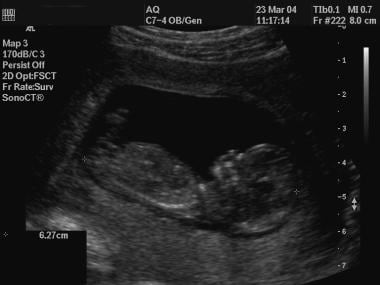
Ultrasound Indicates Later Pregnancy Date: Implications and Considerations
Introduction
Ultrasound examinations play a crucial role in prenatal care, providing valuable information about fetal development and gestational age. While ultrasound is generally considered accurate, discrepancies between the estimated due date (EDD) based on ultrasound and the last menstrual period (LMP) can occur. In some cases, ultrasound may indicate a later pregnancy date than the LMP suggests. This article explores the implications and considerations associated with such findings.
Causes of Discrepancies
Several factors can contribute to discrepancies between ultrasound and LMP-based EDDs:
- Inaccurate LMP: The LMP may not always be a reliable indicator of conception, especially in women with irregular menstrual cycles.
- Implantation Delay: The embryo may implant in the uterus later than expected, resulting in a longer gestation period.
- Measurement Error: Ultrasound measurements of fetal size and development can be affected by the skill of the sonographer and the quality of the ultrasound equipment.
- Fetal Growth Variability: Fetuses can exhibit different growth patterns, leading to variations in size and developmental milestones.
Implications of a Later EDD
An ultrasound-indicated later EDD has several potential implications:
- Extended Pregnancy: The actual pregnancy duration may be longer than the LMP-based EDD, resulting in a prolonged pregnancy.
- Labor Induction: If the ultrasound EDD is significantly later than the LMP EDD, labor induction may be considered to prevent post-term pregnancy.
- Fetal Monitoring: Close fetal monitoring may be recommended to assess fetal well-being and ensure appropriate growth.
- Emotional Impact: A later EDD can cause anxiety and uncertainty for expectant parents, especially if it conflicts with their expectations.
Considerations for Healthcare Providers
When ultrasound indicates a later pregnancy date, healthcare providers should consider the following:
- Confirm Accuracy: Review the ultrasound report carefully and consider repeating the scan to confirm the findings.
- Discuss with Patient: Explain the potential reasons for the discrepancy and its implications to the patient.
- Reassess LMP: Explore whether the patient’s LMP was accurately recorded or if there were any factors that may have affected its reliability.
- Monitor Fetal Growth: Perform regular ultrasound examinations to monitor fetal growth and development.
- Consider Labor Induction: If the ultrasound EDD is significantly later than the LMP EDD and there are concerns about fetal well-being, labor induction may be an option.
Considerations for Expectant Parents
Expectant parents who receive an ultrasound-indicated later EDD should:
- Understand the Implications: Discuss the potential implications with their healthcare provider and ask any questions they may have.
- Manage Expectations: Be prepared for the possibility of a longer pregnancy and adjust their plans accordingly.
- Monitor Fetal Health: Attend all scheduled prenatal appointments and follow the healthcare provider’s recommendations for fetal monitoring.
- Communicate Concerns: Express any concerns or questions they have to their healthcare provider.
Conclusion
Ultrasound examinations are valuable tools for assessing fetal development and gestational age. However, discrepancies between ultrasound and LMP-based EDDs can occur, potentially indicating a later pregnancy date. Healthcare providers and expectant parents should be aware of the implications and considerations associated with such findings. By carefully evaluating the ultrasound results, discussing the implications with the patient, and monitoring fetal growth, healthcare providers can ensure appropriate care and support for expectant parents throughout their pregnancy.